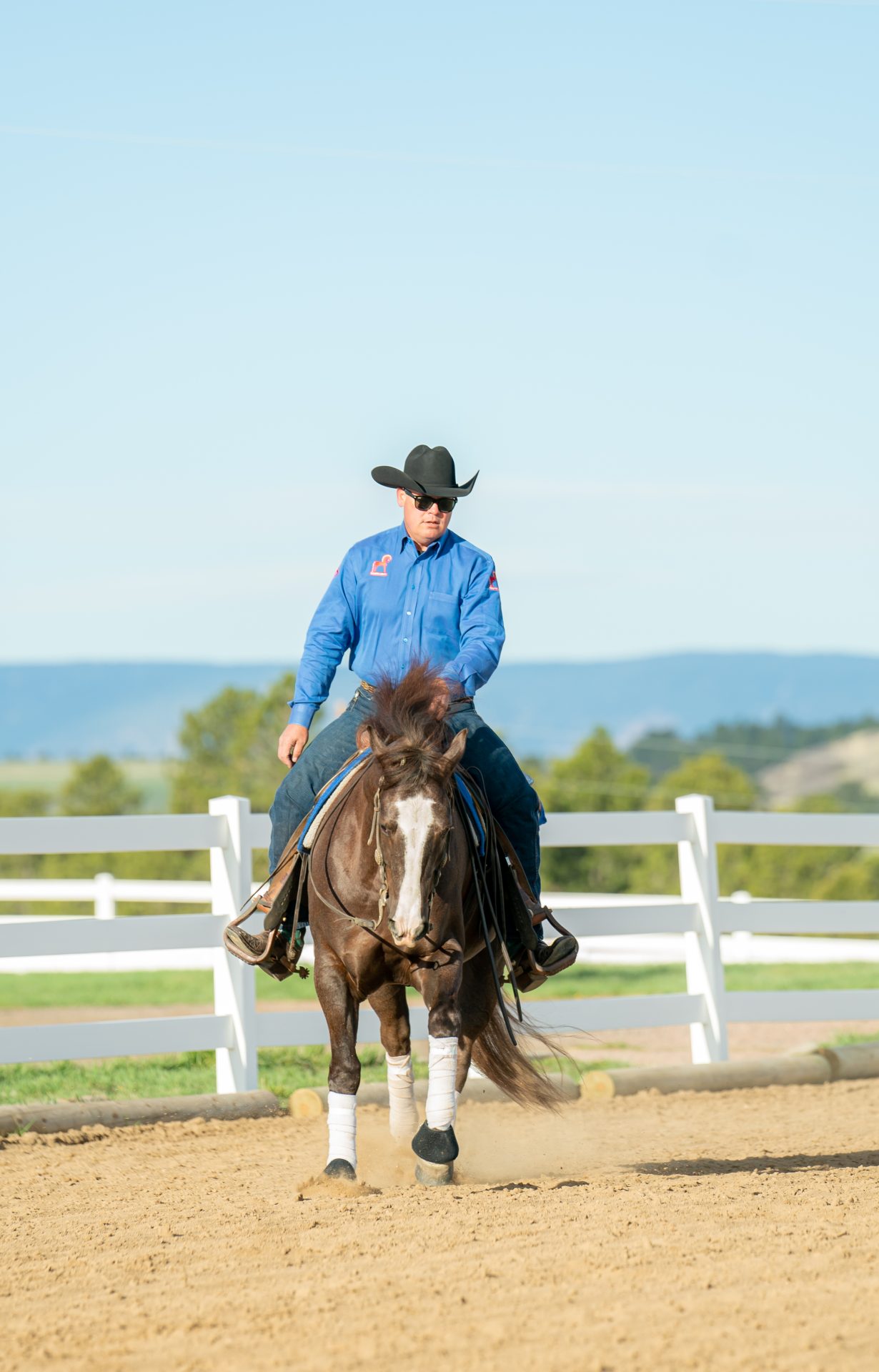Keeping long-term customers does many things for your business, outside of provided reliable income. Three NRHA Professionals share their tips for maintaining customers for the long haul.
By Jennifer Paulson

A full barn is a full barn, in many respects. But a barn full of longstanding customers can be a major key to your success in business. Many experts say it costs five times as much to get a new customer as it does to keep a current one, including all the marketing costs to attract newcomers. That can make a massive difference in your bottom line, not to mention help you sleep better at night knowing that you understand exactly what your customers expect out of you because you’ve known them for years.
We spoke with three established NRHA Professionals—David Hanson, Kari Klingenberg, and Shane Brown—to determine key elements that can help you keep your customers in your barn and participating in your program instead of taking their reining horses somewhere else or—worse—trading in their horses to take up hobby boating or another high-end pastime.
In this article, they’ll cover:
Part 2: Understanding Their Goals
Part 4: Location and Consistency
Location and Consistency
Hanson’s business has been established in one location more than 20 years, making his barn a reliable stalwart in the Northern California horse community.
“We’re established and have created a reputation based on longevity in our location,” he shared. “We also have a strong affiliate in Northern California, which means we have great, fun local shows, and that’s what many of our customers are looking for. Additionally, most of my clients live fairly close, so many are at the barn at least once a week. Frequency of coming out and seeing the facility and horses in good condition is important.”
For Klingenberg, moving to Scottsdale from Washington put her smack in a reining hotspot. The range of her career means her customers visit the barn at varying intervals, depending if they live close or are snowbirds, and the location allows her to successfully conduct all facets of her business.
I grew up showing Arabs, and that’s all about customer service,” Klingenberg shared. “That taught me to keep my business as organized as possible in terms of using my time and their time wisely and efficiently. We make time for socialization and going to dinner so we can all enjoy time together, but my job is to ensure that their horses are prepared for them to go show and achieve their goals.”
Hanson said that also means offering opportunities to compete that make sense for each horse and rider.
“We try not to fill the calendar too much,” he said. “We like to go to shows throughout the entire year on the West Coast, which usually means a show a month. It keeps expenses manageable for my customers, keeps their horses happy, and allows the shows to be fun.”
Read the rest of this article at the links above.



